So, you’ve decided to embark on an exciting journey into the world of backpacking – welcome to the club! Backpacking is more than just a hobby; it’s an adventure that takes you deep into the heart of nature, far away from the hustle and bustle of everyday life. It’s a chance to disconnect, rejuvenate your soul, and discover the beauty of the great outdoors.
But, if you’re new to backpacking, it’s natural to feel a mix of excitement and perhaps a touch of apprehension. After all, it’s not just about throwing a backpack on your shoulders and heading into the wild. Successful backpacking requires a blend of essential skills, proper gear, and a genuine love for exploration.
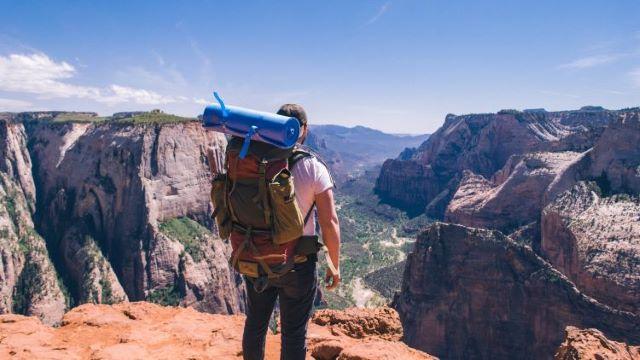
In this guide, I’m not only going to introduce you to the basics of backpacking but also provide you with insights gained through countless trails and campsites. We’ll explore the essential skills you need to acquire, the gear that will become your trusted companions, and the mindset that will make your backpacking journey truly unforgettable.
So, whether you’re planning a weekend getaway to a nearby trail or dreaming of conquering a multi-day wilderness trek, this article is your roadmap to the world of backpacking. Let’s get started on this incredible adventure together!
Backpacking: A Sport for Everyone
Backpacking is a sport that knows no bounds, and that’s what makes it truly special. Whether you’re a seasoned outdoor enthusiast or someone who’s never ventured beyond city limits, backpacking welcomes you with open arms. It’s a sport that adapts to your preferences and fitness level.
For beginners, this means you don’t need to be an athlete or a survival expert to get started. What you do need is the eagerness to learn, the willingness to embrace the unexpected, and the desire to connect with nature on a deeper level. Backpacking offers a sense of accomplishment and self-discovery that few other activities can match.

No matter your age, background, or physical condition, backpacking has something to offer. It’s an inclusive world where you can hike at your own pace, set your own goals, and choose trails that suit your abilities. So, whether you’re a young adventurer seeking adrenaline rushes or a retiree looking for serenity in the mountains, backpacking has a place for you.
In the following sections, we’ll delve into the essential skills and gear you’ll need to embark on your backpacking journey confidently. We’ll equip you with the knowledge and tools to make the most of your outdoor experience, no matter where your wanderlust takes you. So, let’s get ready to explore the wild and discover the wonders of backpacking together.
Benefits of Backpacking
Physical and Mental Health Benefits of Backpacking
Embarking on a backpacking adventure offers a multitude of benefits that extend well beyond the immediate thrill of the trail. It’s a holistic experience that nourishes both your body and mind. Let’s take a closer look at the physical and mental health advantages of backpacking:
1. Physical Fitness: Backpacking is an excellent full-body workout. As you traverse rugged terrains with your pack, you engage your leg muscles, strengthen your core, and improve your cardiovascular health. Each step is a calorie burner, and with the added weight of your gear, you’ll notice your endurance steadily improving.
2. Stress Reduction: Nature has an incredible ability to soothe the soul. The tranquility of the wilderness, the sound of rustling leaves, and the scent of pine trees can work wonders for reducing stress and anxiety. Backpacking allows you to unplug from the chaos of modern life and reconnect with the natural world.
3. Mental Clarity: Time spent in the wilderness provides an opportunity for mental rejuvenation. The absence of daily distractions gives your mind room to wander, fostering creativity and problem-solving skills. You’ll return from your trip with a clearer perspective on life’s challenges.
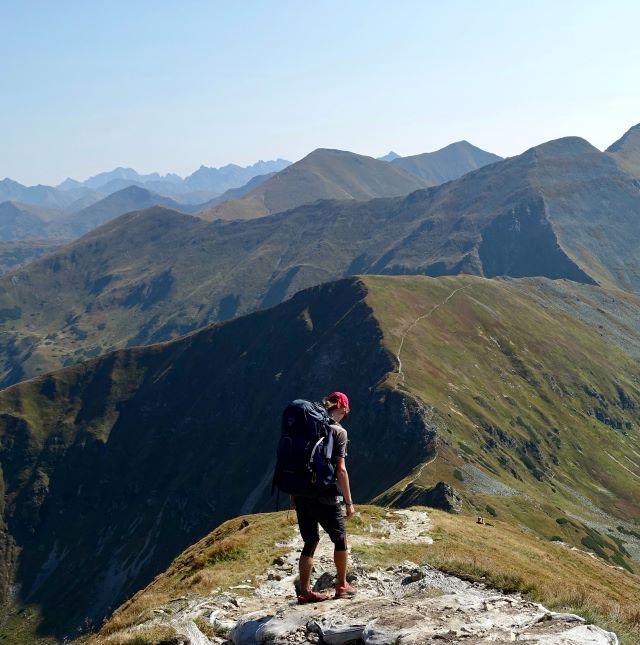
4. Improved Sleep: The physical exertion of backpacking combined with exposure to natural light during the day can regulate your circadian rhythm, leading to more restful sleep at night. Falling asleep to the gentle sounds of nature is a unique and peaceful experience.
5. Connection with Nature: Backpacking deepens your connection with the environment. As you immerse yourself in the natural world, you’ll gain a newfound appreciation for the Earth’s beauty and fragility. This connection often leads to a greater commitment to conservation and environmental stewardship.
6. Enhanced Self-Confidence: Successfully navigating the challenges of backpacking, from setting up camp to reading a map, bolsters your self-confidence. It’s a tangible reminder of your capabilities and resilience.
7. Social Bonding: Backpacking can be a solo endeavor, but it’s also a fantastic way to bond with friends or family. Shared experiences on the trail create lasting memories and strengthen relationships.
The benefits of backpacking extend far beyond the physical act of hiking and camping. It’s a transformative experience that fosters a sense of well-being, self-discovery, and a profound connection to the natural world.
Adventure, Self-Discovery, Connecting with Nature
Backpacking is an adventure that fosters self-discovery and a deep connection with nature:

1. Adventure: Backpacking brings the thrill of the unknown, pushing you out of your comfort zone and presenting unexpected challenges that fuel the excitement of the journey.
2. Self-Discovery: Through self-reliance and facing challenges, backpacking nurtures personal growth and resilience, helping you better understand your capabilities.
3. Connecting with Nature: Backpacking offers moments of profound connection with the natural world, from starry skies to tranquil streams, reminding us of our place in nature’s grand tapestry.
These elements make backpacking more than a hobby; it’s a transformative experience that enriches your life and perspective.
Essential Gear for Backpacking
Before you hit the trail, it’s essential to equip yourself with the right gear. The gear you choose can significantly impact your comfort and safety while backpacking. Here’s a breakdown of the essential equipment you’ll need:
1. Backpack: A comfortable and appropriately sized backpack is your lifeline on the trail. It should have enough capacity to hold your gear and supplies, yet be lightweight and fitted to your body for optimal weight distribution.
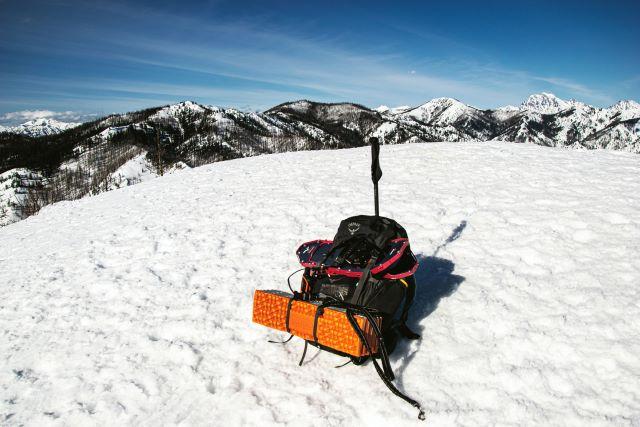
2. Shelter: Depending on your preferences and the season, you’ll need a tent or a lightweight hammock with a rain fly. Make sure your shelter provides protection from the elements and is easy to set up.
3. Sleeping Bag and Pad: Invest in a high-quality sleeping bag appropriate for the expected weather conditions. A sleeping pad adds insulation and comfort by cushioning you from the ground.
4. Footwear: Proper hiking boots or trail shoes with good traction are essential for foot support and protection. Don’t forget moisture-wicking socks to prevent blisters.
5. Clothing: Dress in layers to adapt to changing weather. Include moisture-wicking base layers, insulating mid-layers, and a waterproof, breathable outer layer. Always carry extra socks and a hat.
6. Navigation Tools: A map and compass (and the knowledge to use them) are crucial for staying on the right trail. A GPS device or smartphone with GPS capabilities can also be handy, but remember that technology can fail.
7. Water Treatment: Ensure access to clean drinking water by carrying a water filter, purification tablets, or a portable water purifier.
8. Food and Cooking Equipment: Plan your meals carefully and bring lightweight, non-perishable food. A portable stove, cookware, and utensils are essential for meal preparation.
9. First Aid Kit: A well-stocked first aid kit should include bandages, antiseptic wipes, pain relievers, and any personal medications you may need.
10. Lighting: A reliable headlamp or flashlight with extra batteries is indispensable for navigating in the dark.
11. Backpacking Essentials: Include a multi-tool or knife, fire-starting materials, a repair kit for gear, and a lightweight trowel for Leave No Trace waste disposal.
These are the fundamental items that will ensure your comfort and safety while backpacking. As you gain experience, you’ll refine your gear choices based on your preferences and the specific demands of your trips. Remember that quality and suitability are key when selecting your gear.
Choosing the Right Backpack
Selecting the right backpack is one of the most crucial decisions you’ll make as a backpacker. The perfect backpack should provide comfort, support, and ample space for your gear. Here’s how to choose the right one:
1. Size: Backpacks are measured in liters, indicating their storage capacity. Consider the length of your trips and the gear you’ll carry. Daypacks (20-40 liters) are great for short hikes, while multi-day packs (50-80 liters) are suitable for longer adventures.
2. Fit: A properly fitted backpack is essential for comfort and minimizing strain. Look for one that matches your torso length, with adjustable straps for a snug fit. Most outdoor stores offer fitting services to ensure a proper match.
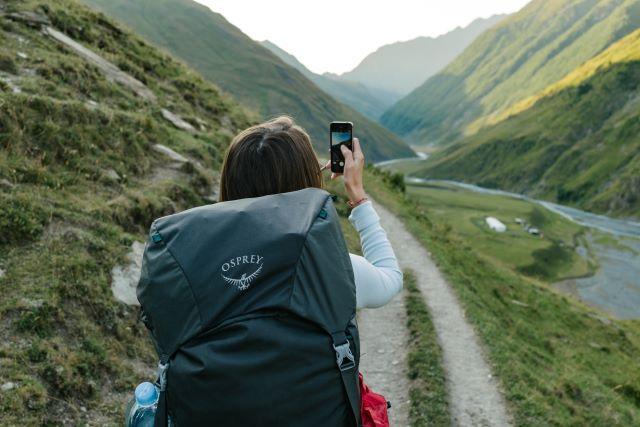
3. Features: Backpacks come with various features, like multiple compartments, hydration sleeves, and external attachment points. Choose features that align with your needs, but remember that added features can mean added weight.
4. Weight: Ultralight backpacks are popular among experienced backpackers because they reduce the load you carry. However, they may not be as durable as heavier options. Balance weight savings with durability based on your needs.
5. Gender-Specific Packs: Some backpacks are designed with gender-specific differences in mind. Women’s backpacks often have narrower shoulder straps and a shorter torso length, providing a more comfortable fit for some female hikers.
6. Try Before You Buy: It’s essential to try on a backpack before purchasing it. Load it with a weight similar to what you’ll carry on the trail to ensure it feels comfortable and fits well.
7. Brand and Model: Trusted outdoor gear brands often have reliable backpack options. Research reviews and ask fellow backpackers for recommendations based on your specific needs.
8. Price: Backpack prices vary widely. While quality is essential, you don’t need to break the bank. Consider your budget and prioritize features that matter most to you.
Choosing the right backpack is a personalized process, so take your time to find the one that feels like an extension of your body. It’s the foundation of your backpacking gear and plays a significant role in your overall enjoyment on the trail.
Different types of Backpacks and their Features
Backpacks come in various types, each tailored to specific activities and needs. Understanding these types and their features will help you choose the perfect backpack for your backpacking adventure:
1. Daypacks: Daypacks are small, lightweight backpacks designed for short trips and day hikes. They typically have a capacity of 20 to 40 liters. Features often include hydration reservoir sleeves, external pockets for quick access to essentials, and comfortable shoulder straps.
2. Hiking Backpacks: These are versatile packs suitable for a range of outdoor activities, including day hikes, overnight trips, and weekend getaways. With capacities ranging from 40 to 65 liters, they offer enough space for gear and are designed for comfort with padded hip belts and multiple pockets.
3. Backpacking Packs: Backpacking packs are designed for multi-day adventures. They have larger capacities, typically ranging from 65 to 80 liters, allowing you to carry everything needed for extended trips. These packs often have adjustable suspension systems, top-loading designs, and external attachment points for gear like sleeping bags and trekking poles.
4. Ultralight Backpacks: Ideal for experienced backpackers looking to reduce their load, ultralight packs are designed for minimalist adventures. They prioritize weight savings, often forgoing extra features in favor of simplicity. Capacities can vary, but they generally range from 40 to 65 liters.
5. Hydration Packs: Hydration packs are designed primarily for carrying water. They have a reservoir compartment and a small storage space for essentials like snacks and a jacket. These packs are perfect for staying hydrated during short hikes and trail runs.
6. Climbing Packs: Climbing packs are specialized for mountaineering and climbing adventures. They feature reinforced gear loops, attachment points for ice axes, and minimalist designs that allow for easy movement in technical terrain.
7. Winter and Ski Packs: These packs are designed for winter sports enthusiasts, with specific features for carrying snowshoes, skis, or snowboards. They often include hydration compatibility and insulated sleeves for hydration hoses.
8. Travel Packs: Travel packs are a hybrid between backpacking and luggage. They’re designed for globetrotters who need to carry their gear comfortably and efficiently. Many have a detachable daypack for added convenience.
9. Child Carrier Packs: For parents who want to introduce their young children to the outdoors, child carrier packs are equipped with a built-in child seat. These packs prioritize safety and comfort for both parent and child.
When choosing a backpack, consider the type of adventure you’ll embark on and the gear you’ll need to carry. Ensure that the features align with your specific requirements, and always prioritize comfort and fit to ensure an enjoyable backpacking experience.
Choosing the Right Footwear
Selecting the proper footwear is paramount for any backpacking journey. Your comfort, foot support, and overall hiking experience greatly depend on your choice of hiking boots or trail shoes. Here’s how to make the right selection:
1. Boot or Trail Shoe: The decision between hiking boots and trail shoes depends on the terrain and personal preference. Boots offer more ankle support and protection, making them ideal for rough terrain and heavy loads. Trail shoes are lightweight and comfortable, perfect for well-maintained trails and those who prefer agility.
2. Fit: Regardless of your choice, fit is crucial. Your hiking footwear should feel snug but not too tight, with enough room for your toes to wiggle. Ensure your heel doesn’t lift when you walk, as this can lead to blisters.
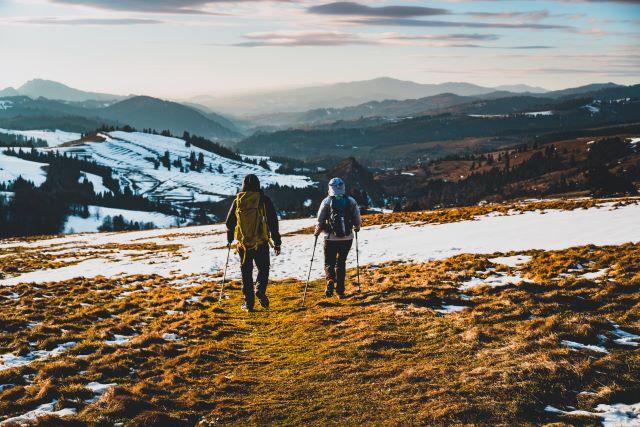
3. Socks: Don’t underestimate the importance of quality hiking socks. Choose moisture-wicking socks that reduce friction and help prevent blisters. Wool and synthetic blends are excellent choices.
4. Waterproofing: Consider the weather conditions you’ll encounter. Waterproof boots or shoes can keep your feet dry in wet environments, but they can be less breathable. Non-waterproof options are more breathable but not suitable for constant moisture.
5. Traction: Look for hiking footwear with grippy outsoles. Vibram soles are a popular choice, providing excellent traction on various terrains, including slippery rocks and muddy trails.
6. Weight: Lightweight footwear can reduce fatigue during long hikes. Consider the weight of the boots or shoes and how it aligns with your comfort and performance needs.
7. Ankle Support: If you have weak ankles or plan to hike on uneven terrain, opt for boots with ankle support. They can help prevent injuries on rocky trails.
8. Break-In Period: New footwear may require a break-in period to ensure they fit comfortably on the trail. Plan ahead and wear them for shorter walks before tackling more extended hikes.
9. Try Before You Buy: Visit a reputable outdoor store and try on different brands and models. Walk around to assess comfort and fit. Remember that shoe sizing can vary between brands.
10. Consider Orthotics: If you have specific foot conditions or require additional arch support, consider custom or over-the-counter orthotic insoles to enhance comfort.
Your choice of footwear will significantly impact your backpacking experience, so invest time in finding the right pair. Ultimately, the best footwear is the one that fits well, suits your hiking style, and provides the necessary comfort and support for your adventures.
Packing Techniques and Tips
Efficiently packing your backpack can make a world of difference when you’re on the trail. Proper packing ensures that you can access essentials easily, maintain balance, and minimize strain. Here are some techniques and tips to help you pack like a pro:
1. Use Stuff Sacks and Compression Bags: Organize your gear into stuff sacks or compression bags to keep items compact and separate. They’re especially handy for clothing and sleeping bags.
2. Pack Heavy Items High and Close: Place heavier items, like your food and cooking gear, high and close to your back. This keeps your center of gravity stable and prevents strain.
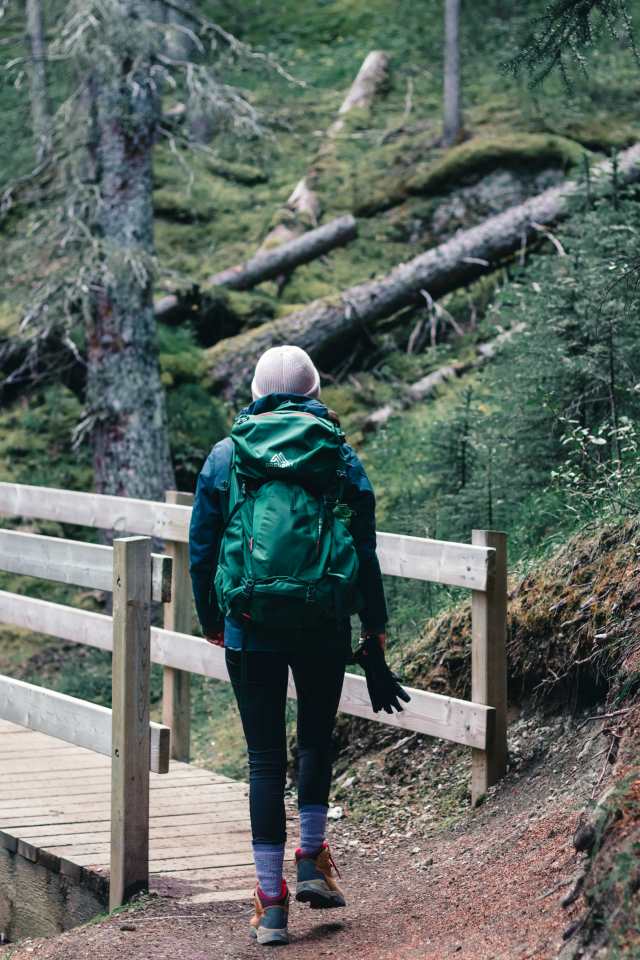
3. Keep Essentials Accessible: Items you’ll need on the trail, like snacks, a map, or rain gear, should be within easy reach. Use the outer pockets or lid of your backpack for quick access.
4. Utilize Dry Bags: Protect essential gear from moisture by using dry bags for clothes, electronics, and sleeping bags. They’ll keep your gear dry in wet conditions.
5. Balance Your Load: Distribute weight evenly between the left and right sides of your backpack to maintain balance. This prevents leaning to one side, reducing fatigue.
6. Group Similar Items: Group similar items together in separate stuff sacks or zip-lock bags. For instance, have a dedicated bag for cooking utensils and another for toiletries.
7. Minimize Redundancy: Evaluate your gear and eliminate redundancy. For example, do you need both a heavy flashlight and a headlamp? Reducing duplicate items saves weight and space.
8. Streamline Your Clothing: Choose clothing that can serve multiple purposes, like convertible pants that transform into shorts. This reduces the need for excessive outfit changes.
9. Plan for Accessibility: Items you may need during breaks or emergencies, such as a first aid kit or extra layers, should be easy to access without unpacking your entire backpack.
10. Practice and Adjust: Before embarking on a big backpacking trip, practice your packing skills. Experiment with different layouts and see what works best for you. Adjust as needed.
11. Consider a Packing List: Create a packing list to ensure you don’t forget crucial items. Check off each item as you pack it to avoid leaving anything behind.
12. Be Mindful of Weight Distribution: Pay attention to where you place heavy and bulky items. Heavier items should be closer to your back and higher up, while lighter items can go lower and towards the bottom.
Remember that your packing style will evolve with experience, so don’t be afraid to adapt and refine your techniques as you gain more backpacking miles under your belt. The goal is to make your time on the trail more comfortable and enjoyable, so find what works best for you.
Planning Your Trip
Embarking on a backpacking adventure requires careful planning to ensure a safe and enjoyable experience. Whether you’re a beginner or a seasoned backpacker, these planning tips will help you prepare for your journey:
1. Choose Your Destination: Start by selecting a destination that matches your skill level and interests. Research the area’s trails, terrain, and climate to ensure it aligns with your expectations.
2. Check Regulations: Familiarize yourself with the regulations of the area you plan to visit. This includes permits, campfire rules, waste disposal guidelines, and any restrictions on camping and hiking.
3. Create an Itinerary: Plan your route and itinerary, noting key landmarks, campsites, and water sources. Share your itinerary with a friend or family member in case of emergencies.
4. Assess Your Fitness: Be honest about your physical fitness and choose trails that match your abilities. Gradually increase the difficulty level as you gain experience.
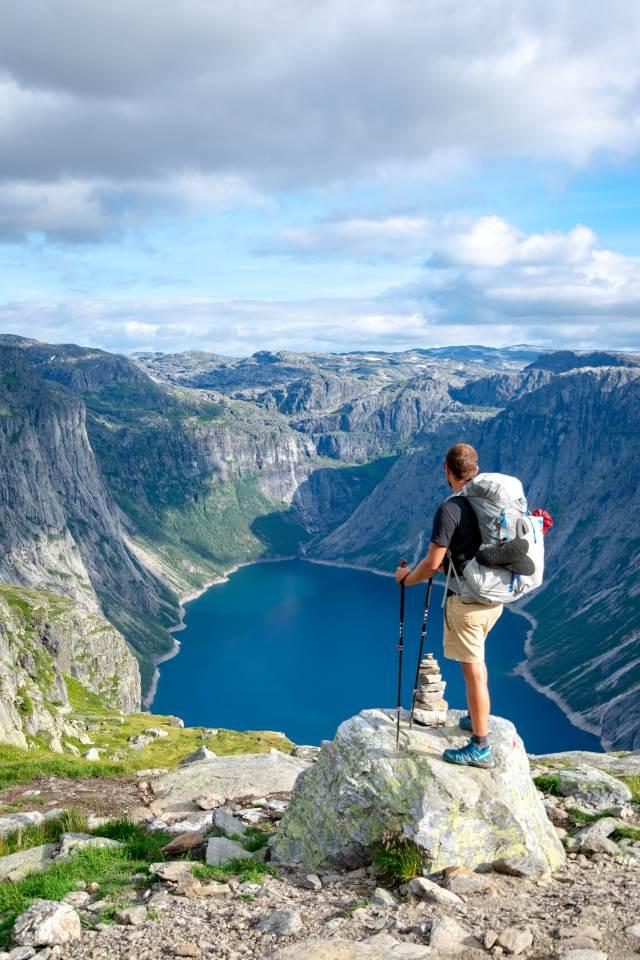
5. Gear Check: Review your gear and ensure it’s in good condition. Check for any necessary repairs or replacements, and make a checklist to ensure you don’t forget anything.
6. Weather Forecast: Keep an eye on the weather forecast for your chosen dates. Be prepared for changing weather conditions and pack accordingly.
7. Leave No Trace: Follow Leave No Trace principles to minimize your environmental impact. This includes packing out all trash, practicing proper waste disposal, and respecting wildlife.
8. Safety Measures: Carry essential safety items, including a first aid kit, navigation tools (map and compass), and a multi-tool. Familiarize yourself with basic wilderness first aid.
9. Food and Water: Plan your meals and pack lightweight, high-energy foods. Know where you can find water sources along your route and carry a water purification system.
10. Know Your Limits: Be aware of your physical and mental limits. Don’t push yourself too hard, and listen to your body. It’s okay to turn back or modify your plans if necessary.
11. Emergency Plan: Develop an emergency plan that includes how to signal for help, what to do in case of injury, and when to activate emergency services.
12. Navigation Skills: Brush up on your navigation skills, including map reading and using a compass or GPS device. Know how to orient yourself on the trail.
13. Leave an Itinerary: Inform someone you trust about your trip details, including your starting and ending points, estimated return date, and emergency contacts.
14. Wilderness Etiquette: Be respectful of fellow backpackers and wildlife. Keep noise levels down, yield the trail to others, and avoid disturbing animals.
15. Permits and Reservations: If required, obtain the necessary permits and make campground reservations well in advance, especially for popular destinations.
By taking these planning steps, you’ll set yourself up for a successful and enjoyable backpacking adventure. Proper preparation not only enhances safety but also allows you to fully immerse yourself in the beauty of the outdoors.
Navigation Techniques
Map
Effective map navigation is essential for successful backpacking. Here’s a concise guide to help you get started:
- Get the Right Map: Obtain a topographic map of your hiking area, available at outdoor retailers or online.
- Learn Map Symbols: Understand map symbols and legends, which explain features like trails, water sources, and elevation contours.
- Orient the Map: Align the map with the actual terrain using landmarks or a compass to ensure it’s properly oriented.
- Read Contour Lines: Interpret contour lines to gauge terrain steepness and elevation changes.
- Locate Your Position: Identify nearby landmarks and match them to the map to pinpoint your location.
- Plan Your Route: Plot your route on the map, marking waypoints and distances to stay on course.
- Measure Distances: Use map scales to estimate distances between points along your route.
- Adjust for Declination: Correct for magnetic declination when using a compass.
- Follow Trail Symbols: Recognize trail symbols on the map to navigate established routes.
- Keep the Map Dry: Protect your map from moisture with a waterproof case or sleeve.
- Practice Navigation: Improve your skills by practicing in familiar areas.
- Carry Backup: Always have a backup navigation tool, like a GPS device or smartphone with GPS capability.
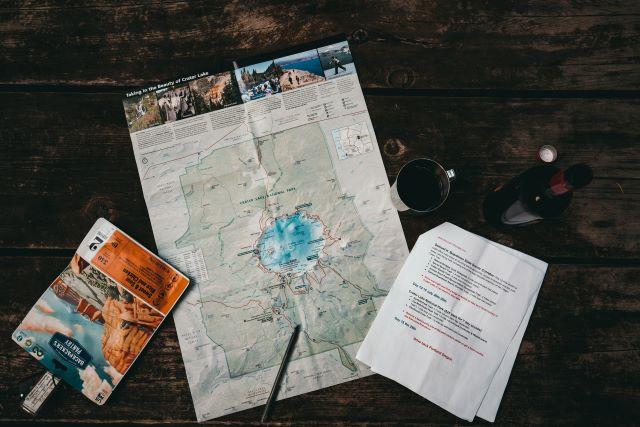
With these map navigation basics, you’ll confidently explore the wilderness while staying on course and enjoying your backpacking adventure.
Compass
A compass is a reliable tool for orienting yourself and maintaining your sense of direction while backpacking. Here’s a concise guide on how to use a compass effectively:
- Compass Components: Familiarize yourself with the parts of a compass. These include the baseplate, rotating bezel with degree markings, magnetic needle, orienting arrow, and direction-of-travel arrow.
- Set the Map: Align the edge of your map with the compass’s straight edge or baseplate. Ensure the direction-of-travel arrow points toward your destination.
- Orient the Compass: Hold the compass flat and level. Rotate the bezel until the magnetic needle aligns with the orienting arrow inside the compass housing. This action orients the compass with magnetic north.
- Read the Bearing: Identify the degree reading on the bezel where the direction-of-travel arrow now points. This reading represents the bearing or azimuth to your destination.
- Follow the Bearing: To travel in the desired direction, hold the compass in front of you with the direction-of-travel arrow pointing away from you. Rotate your body until the magnetic needle aligns with the orienting arrow. Now, the direction-of-travel arrow indicates the way to go.
- Adjust for Declination: If needed, adjust for magnetic declination by turning the bezel according to the local declination angle. This aligns your compass with true north instead of magnetic north.
- Navigate Using Bearings: As you hike, periodically check your compass to stay on course. Identify prominent landmarks along your bearing to confirm you’re headed in the right direction.
- Use Back Bearings: In some situations, you may need to find your way back. To do this, reverse your compass bearing by adding or subtracting 180 degrees to/from the initial reading.
- Declination Diagram: Some compasses have a built-in declination diagram, making it easier to account for declination. Consult the compass manual for guidance.
- Carry a Map: Always have a map with you when using a compass. A map complements your compass navigation and provides a broader view of the terrain.
- Practice Compass Skills: Before heading into the wilderness, practice using your compass in familiar areas. This helps you become proficient in navigation techniques.
- Carry Backup: While compasses are reliable, carry a backup navigation tool like a GPS device or a smartphone with a GPS app.
With these compass basics, you’ll have a valuable tool at your disposal for confidently navigating the backcountry. Remember that practice and familiarity with your specific compass are key to mastering this skill.
GPS Device
Using a GPS device for backpacking simplifies navigation. Here’s how to make the most of it:
- Get a GPS Device: Invest in a reliable GPS unit designed for outdoor use. Ensure it’s loaded with topographic maps of your hiking area.
- Satellite Reception: Power on the GPS device in an open area with a clear view of the sky. It needs a strong satellite signal for accurate positioning.
- Mark Waypoints: Before setting out, mark waypoints on your GPS for key locations like trailheads, campsites, and water sources.
- Follow Preloaded Routes: Many GPS units allow you to download or create routes beforehand. Follow these routes to stay on track.
- View Your Track: As you hike, your GPS will record a track log. This helps you retrace your steps or backtrack if needed.
- Check Elevation: GPS devices often display your current elevation. Use this information to gauge terrain changes.
- Monitor Battery Life: Keep an eye on your GPS’s battery life. Carry spare batteries or a portable charger if necessary.
- Use GPS Coordinates: In emergencies or when communicating with others, share GPS coordinates for your location.
- Practice with Your GPS: Before your trip, familiarize yourself with your GPS device. Learn how to use its features effectively.
- Carry a Map: While GPS devices are valuable, always carry a paper map as a backup.
- Stay Updated: Keep your GPS software and maps up to date for accurate information.
- Enjoy the Benefits: GPS devices offer real-time tracking, precise location data, and easy route planning, enhancing your backpacking experience.
By incorporating a GPS device into your backpacking gear, you’ll have a powerful tool to navigate confidently through diverse terrains and discover new adventures with ease.
Safety precautions to follow while backpacking
Wildlife encounters
Backpacking in the wilderness often means encounters with wildlife. While these interactions can be exciting, it’s essential to prioritize safety for both you and the animals. Here are some precautions to follow:
- Research Wildlife: Before your trip, research the specific wildlife in the area you’ll be visiting. Learn about their habits, behaviors, and potential risks.
- Proper Food Storage: Keep all food items and trash securely stored in bear-resistant containers or suspended from trees when camping. This prevents attracting wildlife to your campsite.
- Make Noise: While hiking, especially in areas known for bears or cougars, make noise to alert animals of your presence. Clap your hands, talk, or use a bear bell.
- Carry Bear Spray: In regions with bear populations, carry bear spray and know how to use it. It can deter aggressive bears if necessary.
- Respect Wildlife’s Space: Admire wildlife from a safe distance. Use binoculars or a zoom lens for close-up views and never approach or feed wild animals.
- Travel in Groups: Backpacking with others enhances safety. Groups tend to deter wildlife encounters, and you can watch out for each other.
- Avoid Wildlife at Night: Wildlife is often more active during dawn and dusk. Plan your hiking and camp activities accordingly.
- Stay on Trails: Stick to established trails to minimize disturbing wildlife and reduce the risk of stumbling upon animals unexpectedly.
- Keep Pets Leashed: If you bring pets, keep them on a leash to prevent them from chasing or provoking wildlife.
- Learn Animal Behavior: Understand how different animals may react in various situations. For example, moose can be aggressive if they feel threatened.
- Report Sightings: If you spot endangered or rare wildlife, report your sightings to the local authorities or conservation organizations.
- Emergency Plan: Have an emergency plan in case of a wildlife encounter, especially in a bear country. Know how to respond calmly and confidently.
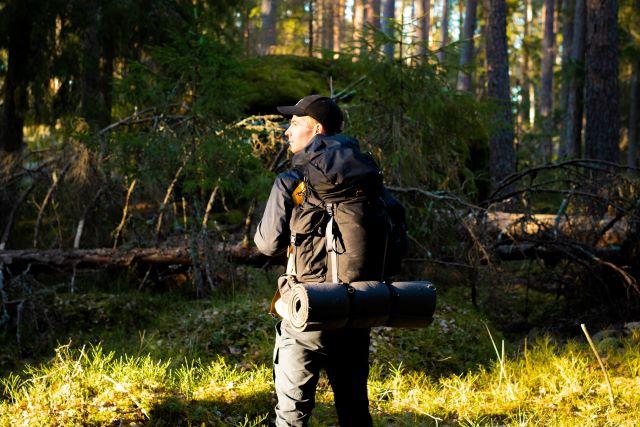
Remember that wildlife encounters are part of the wilderness experience, and respecting their habitat is crucial for their preservation and safety. Following these precautions helps ensure a harmonious coexistence between backpackers and the animals that call the wilderness home.
Weather changes
Weather in the wilderness can be unpredictable and change rapidly. To stay safe while backpacking, it’s crucial to be prepared for weather shifts. Here are essential precautions:
- Check Weather Forecasts: Before your trip, monitor weather forecasts for the area you plan to visit. Keep an eye on updates throughout your journey.
- Layer Clothing: Dress in layers to adapt to temperature variations. Start with moisture-wicking base layers, add insulation for warmth, and top with a waterproof and windproof shell.
- Pack Rain Gear: Always carry rain gear, including a waterproof jacket, pants, and a cover for your backpack. Even in sunny weather, rain can surprise you.
- Stay Informed: While on the trail, be aware of changing weather conditions. Look for signs like dark clouds, sudden drops in temperature, or strong winds.
- Seek Shelter Early: If you sense a storm approaching, seek shelter promptly. Lightning poses a significant risk, so avoid open areas and tall trees.
- Plan Adequate Campsites: Choose campsites wisely. Avoid low-lying areas prone to flooding and exposed locations vulnerable to wind and cold.
- Stay Dry: Keep your clothing, gear, and sleeping bag dry. Wet gear can lead to hypothermia, even in mild temperatures.
- Know Hypothermia Signs: Learn the signs of hypothermia, including shivering, confusion, and slurred speech. Take immediate action if you or a fellow backpacker displays these symptoms.
- Carry Extra Food: In case of unexpected delays due to weather, carry extra food to sustain you until conditions improve.
- Signal for Help: If weather conditions become severe and you’re unable to continue safely, signal for help using a whistle, mirror, or other emergency devices.
- Know Evacuation Routes: Familiarize yourself with evacuation routes and locations of nearby shelters or cabins in case of severe weather.
- Communicate Your Plans: Inform someone back home about your trip itinerary and expected return date. This way, they can alert authorities if you don’t return as planned.
- Be Flexible: Be prepared to alter your plans if weather conditions deteriorate. Safety should always be the top priority.
By staying vigilant, prepared, and adaptable, you can safely navigate changing weather conditions while enjoying the beauty of the outdoors during your backpacking adventures.
First aid
Backpacking adventures can lead to unexpected situations where basic first aid skills are invaluable. Here’s what you need to know:
Carry a First Aid Kit: Always have one in your backpack, stocked with bandages, gauze, antiseptic wipes, tape, tweezers, scissors, pain relievers, and any personal meds.
Learn Basic First Aid: Familiarize yourself with treating cuts, scrapes, blisters, burns, sprains, and stings. Consider a wilderness first aid course for deeper knowledge.
Clean Wounds Promptly: Use clean water or antiseptic wipes to cleanse wounds, then cover them with sterile dressings.
Treat Blisters: Prevent blisters with moleskin or blister pads, and never pop them.
Dealing with Sprains: Follow RICE (Rest, Ice, Compression, Elevation) for sprains and wrap with an elastic bandage.
Recognize Dehydration: Look for dark urine, dizziness, or dry mouth in hot weather. Carry rehydration salts.
Allergic Reactions: Be aware of allergies and carry antihistamines for mild reactions. For severe allergies, have an epinephrine auto-injector if prescribed.
Heat-Related Illnesses: Learn to spot and treat heat exhaustion and heatstroke, and cool down in a shaded area.
Cold Weather Vigilance: Watch for hypothermia signs in cold weather and seek shelter.
Snake Bites: Immobilize the affected limb, keep it at or below heart level, and seek medical help.
CPR and Rescue Breathing: Learn these lifesaving skills for emergencies.
Stay Calm: In any emergency, staying calm is crucial. Assess, provide first aid, and call for help if necessary.
With these essential tips, you can be prepared for common backpacking injuries and enjoy outdoor adventures safely.
Backpacking Etiquette
Backpacking isn’t just about exploring the wilderness; it’s also about practicing responsible and respectful behavior towards nature and fellow adventurers. Here’s a guide to backpacking etiquette:
Leave No Trace: The golden rule of backpacking is to leave no trace. Pack out all trash, bury human waste in a “cathole” dug 6-8 inches deep, and dispose of dishwater at least 200 feet from water sources.
Stay on Designated Trails: Straying from established trails can harm fragile ecosystems and disrupt wildlife. Stick to marked paths and avoid creating new ones.
Minimize Noise: Nature’s symphony is part of the backpacking experience. Keep voices down, avoid loud music, and turn off cell phones or set them to silent mode.
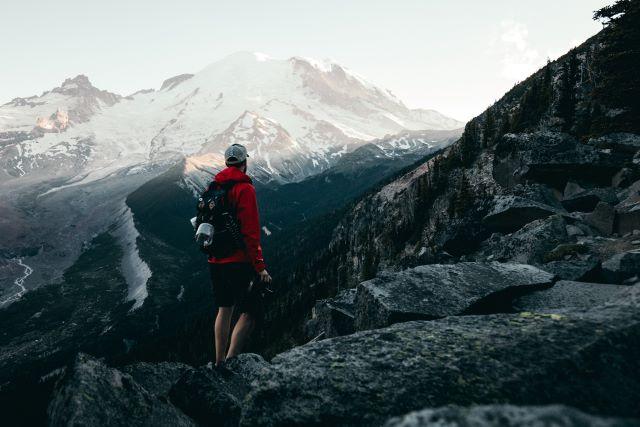
Camp Away from Water: Set up camp at least 200 feet from lakes and streams to protect water quality and wildlife habitats.
Respect Wildlife: Admire wildlife from a distance and never feed animals. Keep food stored securely to avoid attracting them to your campsite.
Yield the Trail: When encountering other hikers on narrow trails, the one traveling uphill has the right of way. Make way for them to pass safely.
Share Campsites: In busy areas, be willing to share campsites with fellow backpackers, and be considerate of their space and privacy.
Campfire Rules: Use a camp stove for cooking; open fires can scar landscapes and deplete wood resources. Obey fire regulations, and if fires are allowed, use established fire rings or pans.
Pack Out Everything: This includes trash, food scraps, and hygiene products. Dispose of waste properly to keep the wilderness pristine.
Respect Local Regulations: Know and follow the rules of the area you’re visiting, including camping permits, fire restrictions, and wildlife protection guidelines.
Group Size: Keep groups small to minimize your impact on the environment and maintain a peaceful atmosphere.
Be Friendly: Greet fellow backpackers with a smile and a friendly attitude. Sharing stories and experiences can enrich your journey.
Educate Yourself: Learn about the flora, fauna, and history of the area you’re exploring. Knowing more about your surroundings enhances your appreciation.
By following these backpacking etiquette guidelines, you not only protect the environment but also contribute to a positive and harmonious outdoor experience for everyone.
Solo Backpacking vs. Group Backpacking
Backpacking offers two distinct experiences: going solo or traveling with a group. Here’s how they differ:
Solo Backpacking:
In solo backpacking, you’re the sole decision-maker. This style offers:
Independence: You set the pace, choose routes, and make decisions independently. Intimate Connection: Solo trips allow for deep connections with nature and self-reflection. Personal Growth: Facing challenges alone can build confidence and valuable skills. Light Packing: Travel efficiently without group gear or responsibilities.
Group Backpacking:
Group backpacking is about camaraderie and shared experiences. It includes:
Companionship: Forge bonds with friends or like-minded adventurers. Safety Net: In emergencies, you have a support system. Shared Responsibilities: Tasks like camp setup and cooking are divided, making the trip more relaxed. Social Interaction: Enjoy the company and learn from fellow backpackers.
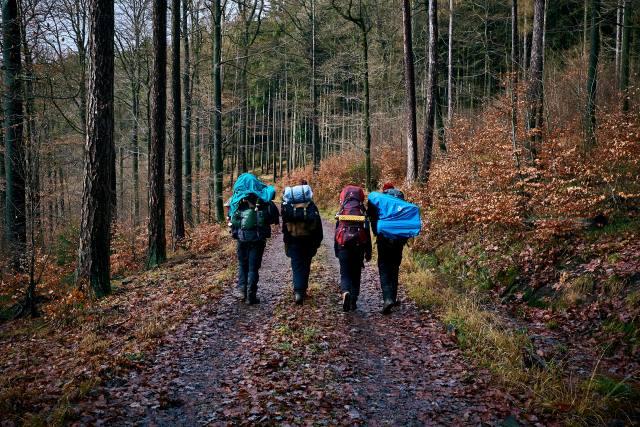
How to Decide:
Consider these factors when choosing:
Experience Level: Newcomers often start with a group for safety, while experienced backpackers may prefer solo adventures. Goals: Decide if you seek solitude and self-discovery or a shared experience with others. Safety: In unfamiliar terrain, opt for group backpacking for added security. Personal Preference: Ultimately, it comes down to your preferences and the type of experience you desire.
Whether you go solo or choose a group, remember that the essence of backpacking lies in your connection with nature and the lasting memories you create along the way.
Water and Food Procurement
How to purify water
When backpacking, ensuring access to safe drinking water is paramount. Here’s how to purify water in the wild:
Boiling: Bring water to a rolling boil for at least one minute (or three minutes at higher altitudes). Boiling is simple and effective, killing bacteria, viruses, and parasites. However, it requires a heat source and time.
Water Purification Tablets: Add purification tablets to water and wait for the recommended contact time (usually 30 minutes). They are lightweight, convenient, and kill most pathogens. However, they may leave a chemical taste and are not effective against some protozoa.
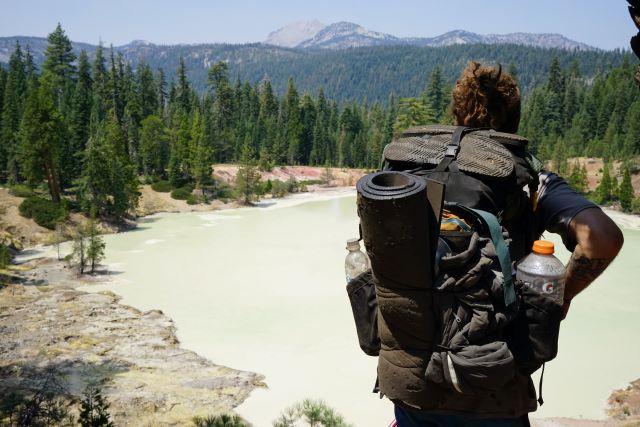
Water Filters: Use a pump or squeeze water through a filter that traps particles and pathogens. Filters are effective against most bacteria and protozoa, with no chemical taste. However, they require a working filter, which can clog, and are not effective against viruses.
UV Water Purifiers: Use a UV device to expose water to ultraviolet light, which damages pathogens’ DNA. This method is lightweight, leaves no chemical taste, and is effective against a broad range of pathogens. However, it requires batteries and may not remove particulates.
Iodine Drops: Add iodine drops to water and wait for the recommended contact time (usually 30 minutes). They are lightweight and kill most pathogens but may have a noticeable taste. Not suitable for pregnant individuals or those with thyroid conditions.
Straw Filters: Drink directly from a straw with a built-in filter. Straw filters are compact, lightweight, and effective against bacteria and protozoa. However, they have limited capacity and are not effective against viruses.
Chemical Sterilization (Chlorine): Add chlorine bleach to water and wait for the recommended contact time (usually 30 minutes). Chlorine is widely available and effective against most pathogens but may not be suitable for wilderness areas with unknown contaminants.
Before your trip, research the water sources along your route and choose a purification method that suits your needs. Always follow the manufacturer’s instructions, and carry backup purification methods in case of equipment failure or source variation. Safe drinking water is essential for a successful backpacking adventure.
Meal Planning and Food Storage
Proper meal planning and food storage are essential aspects of a successful backpacking trip. When planning your backpacking meals, consider factors like calorie count, a balanced diet, and the convenience of dehydrated meals and high-energy snacks. Depending on your preferences, bring lightweight cooking equipment for meal preparation.
Food storage is crucial for your safety and the environment. In bear country, bear-resistant canisters are essential for storing food and preventing wildlife access. In non-bear areas, you can hang your food bag from a tree limb. Minimize food odors using airtight containers and double bagging items with strong scents. Always follow Leave No Trace principles, packing out all food scraps and trash.
Efficient cooking practices can enhance your backpacking experience. Plan meals to minimize fuel usage, and consider one-pot meals for simplicity. Ensure you have enough water for dehydrated meals, and choose the right water purification method for your needs.
Lastly, remember to leave no trace of your presence in the wilderness. Pack out all waste, including food scraps, trash, and leftover bits, to preserve the natural environment for others to enjoy.
Conclusion
In conclusion, mastering the art of meal planning and food storage is essential for a successful and enjoyable backpacking adventure. By carefully considering your nutritional needs, choosing the right food items, and following proper food storage techniques, you can ensure that you have the sustenance you need to fuel your journey while minimizing your impact on the environment.
Whether you’re embarking on a solo trek or backpacking with a group, these skills will help you stay energized and satisfied throughout your outdoor escapades. So, plan your meals, pack your bags, and get ready to savor both the beauty of nature and the flavors of your backpacking cuisine.
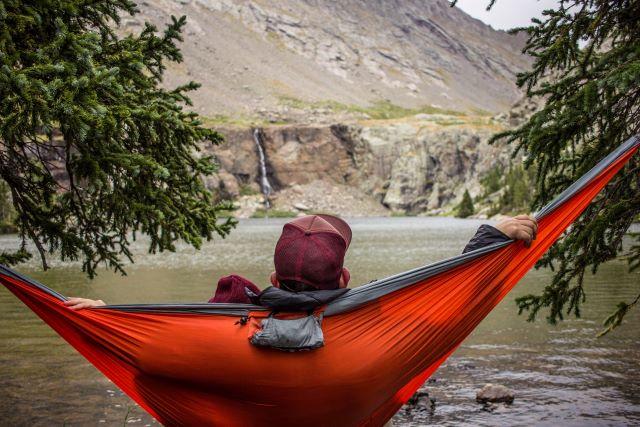
FAQs:
Do I need to be physically fit to start backpacking?
While you don’t need to be an elite athlete, a reasonable level of physical fitness is beneficial for backpacking. Trails can vary in difficulty, so choose routes that match your fitness level. Regular hiking and cardiovascular exercises can help you prepare.
What is the best time of the year to go backpacking?
The best time for backpacking depends on your chosen destination. In many regions, late spring to early fall offers the most favorable weather conditions. However, some areas are suitable for winter backpacking. Research the climate of your destination to plan accordingly.
Can I use a regular camping tent for backpacking?
Backpacking tents are designed to be lightweight and compact, making them suitable for backpacking trips. Regular camping tents may be heavier and bulkier, which can be less convenient for backpacking. If your regular tent meets weight and size criteria, you can use it.
Are there age restrictions for backpacking?
There are typically no age restrictions for backpacking. People of all ages can enjoy this outdoor activity. However, consider physical capabilities and individual health when planning backpacking trips, especially for older adults or young children. Start with shorter and less strenuous hikes for beginners and gradually progress to longer trips.









